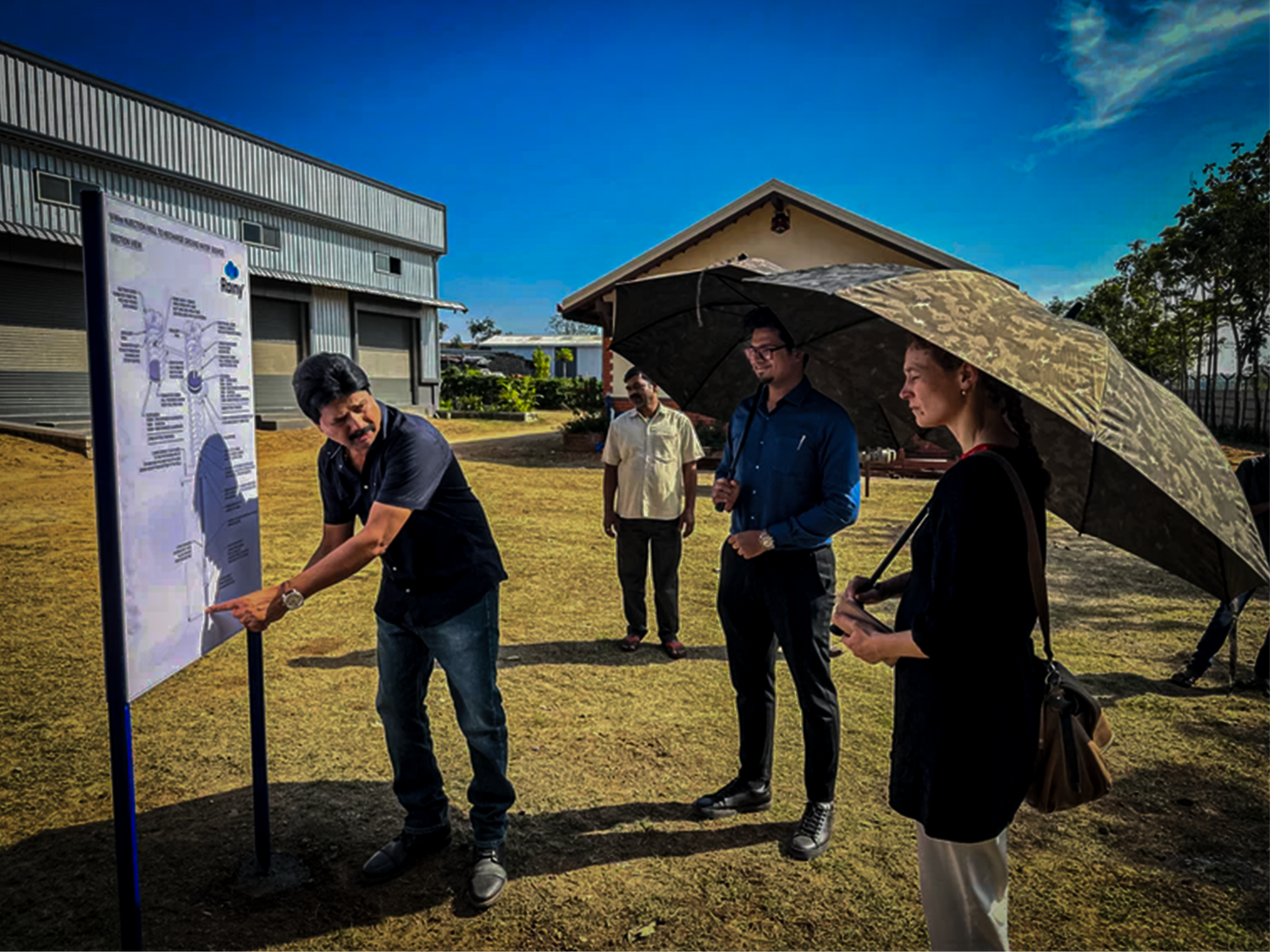
Help
Video Guide
Explore our video guides for easy installation, maintenance tips, and maximizing your Rainy Filter's efficiency.

FAQs
Find answers to common questions about our self-cleaning rainwater filters, installation, maintenance, and how they help you save thousands of liters annually.

1. How does a Rainy filter work?
🡪Rainy filters work on dual working principles depending on the intensity of the rain. During periods of light rainfall, it relies on "cohesive force," and during periods of heavy rainfall the filter automatically switches over to "centrifugal force". These filters require no external energy; they rely solely on gravity.
2. What filter is best for rainwater harvesting?
🡪It is recommended to purchase self-cleaning filters to avoid frequent manual maintenance and to look for high-efficiency filters. Here at Rainy, we have designed a cost-effective, self-cleaning, dual-intensity filter that operates at a high level of efficiency.
3. What is Rooftop rainwater harvesting?
🡪Rooftop rainwater harvesting is the practice of collecting and storing rainwater that falls on rooftops for later use. This involves capturing rainwater from rooftops and directing it into a storage system such as a tank, cistern, or underground reservoir after passing it through a filter apparatus. Rooftop rainwater harvesting systems typically include a gutter system to collect rainwater from the roof and downspouts or pipes to channel the water to a storage tank. The collected water is then treated and filtered as needed for its intended use.
4. How to install RAINY Filters?
🡪Rainy filters are simple to install and are wall mountable units. 360-degree union rotation capability make Rainy filter suitable for any site conditions. It can be easily wall mounted, self-installable with easy to understand instructions make it user friendly or any local plumber with minimal experience is sufficient for installing.
5. How to install your Rainy Filters?
🡪Rainy filters are simple to install and are wall mountable units. The 360-degree union rotation capability make Rainy filter suitable for any site conditions. It can be easily wall mounted, self-installable with easy to understand instructions make it user friendly or any local plumber with minimal experience is sufficient for installing.
6. How to clean Rainy Filters?
🡪Steps to clean Rainy Filters:
- Uncap the filter top by rotating the cap in clockwise direction.
- Gently lift-up the stainless steel filter element.
- Check for fine particulate clogging in the filter element by visual inspection.
- Clean the filter element by placing it under tap water and by brushing the inner area thoroughly using the cleaning brush provided with the filter.
- Hold the filter element against the light and see if the light passes through the pores if the light passes through then return the filter to its original position.
- If you are unable to clean the filter with the tap water, it is recommended to use pressurized water, repeat the light test and return the filter to its original position.
7. How often should I maintain Rainy Filters?
🡪Rainy filters do not require routine maintenance because they are self-cleaning and auto-flushing systems. Nevertheless, we recommend inspecting filters once a year and clean the filter before the rainy season.
8. Why Rainy Filters are called as Dual intensity filters?
🡪Dual intensity indicates that the filter is designed to handle any intensity of precipitation, from light to heavy. Both low- and high-intensity rain is effectively filtered by dual intensity Rainy filters.
9. Why Rainy Filters are known as non-clogging filters?
🡪 A non-clogging filter is a type of filtration system designed to prevent blockages or clogs caused by the accumulation of contaminants or debris. The Rainy filter assembly is an open-ended system without a gate valve at the drain outlet that prevents water and solid particle stagnation by continuously flushing out dirt and debris.
10. Does Rainy Filters require electricity?
🡪No, Rainy Filters does not require electricity, because Rainy Filters work on Gravitational force.
11. How to choose right Rainy Filters?
🡪Understand your requirement, depending upon the required rooftop area choose the filters.
The below information can help you to choose the "Rainy Filters" based on your requirements.
- FL-80: It is suitable for upto 1300 sq.ft rooftop area.
- FL-150: It is suitable for upto 1900 sq.ft rooftop area.
- FL-250: It is suitable for upto 2700 sq.ft rooftop area.
- FL-350: It is suitable for up to 3,800 sq. ft rooftop area.
- FL-500: It is suitable for up to 5,400 sq. ft rooftop area.


